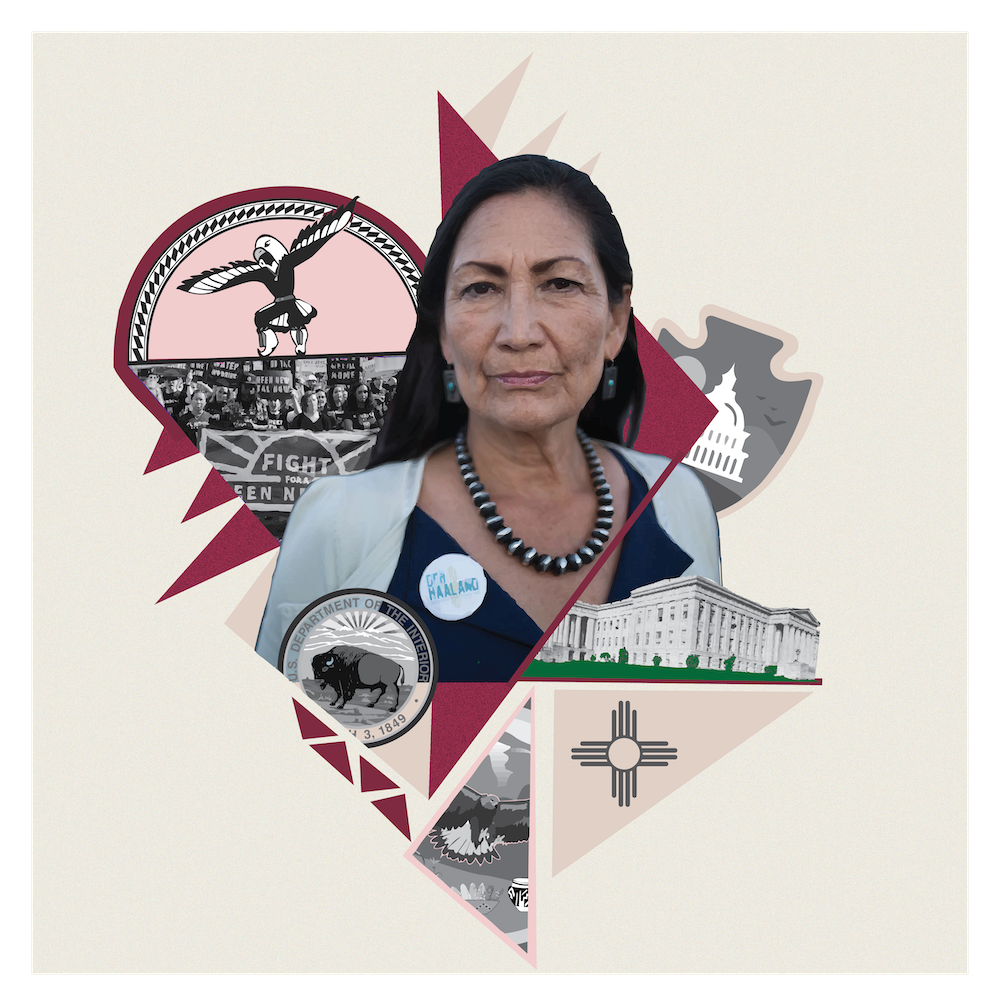Like many of you, I've done a lot of reading about the election over the past week and I wanted to share five takeaways that have stuck with me.
In summary, the "Red Wave" that pundits and pollsters saw in the weeks leading up to Election Day was shut down by women, young people and by Independents and Republicans who care about reproductive rights and democracy.
1. Women Are Not a Special Interest Group
As Elaine Kamarck from the Brookings Institute told USA Today, "'This understanding of the women’s vote was incredibly, and weirdly, brushed off as soon as people started saying they cared about inflation,' Kamarck said. 'The polling here was really screwy.'"
Screwy because not only are women the majority of the population, they also vote more than men. And this election was no exception. According to CNN exit polling, 52% of voters were women and 48% were men.
As Amanda Hesse writes in the Washington Post, pundits, pollsters and politicians need to "fully embrace that reproductive issues are meat-and-potato issues, not desserts that you’ll tack onto a plate if there’s room at the end of the meal."
2. Even in red states, abortion rights were a 'driving force'
In exit polls, nearly 30 percent of voters said that abortion was the most important issue in determining their vote. Additionally, 60 percent said that they were angry or "dissatisfied" with the Supreme Court's decision overturning Roe v. Wade.
"In Virginia, Minnesota, New Mexico and elsewhere, abortion rights emerged as a driving force in the midterm elections, helping Democrats win ballot measures, governor’s races and House seats," writes Lisa Lerer at The New York Times.
There were five abortion ballot measures in states across the country (six, if you count the primary measure in Kansas), and in every single one, the pro-abortion rights position passed decisively. That includes states like Kentucky, Montana and Kansas — solid red states where Trump won in 2020 by margins of 25.9%, 16%, and 14% respectively. In Kansas, Democrat Laura Kelly edged out her Republican rival in the governor's race and voters also rejected a state constitutional amendment that would have given the Republican-led legislature more power for the second time this year.
“In California, Proposition 1 passed, which guarantees the constitutional right to reproductive freedom “in their most intimate decisions,” including the right to abortion and contraceptives.
In Kentucky, Constitutional Amendment 2 failed, which would have amended the state constitution to say there is no right to abortion, or any requirement to fund abortion.
Michigan’s Proposal 3 passed, which will create a state constitutional right to reproductive freedom, including decisions “about all matters relating to pregnancy,” including abortion and contraception.
In Montana, voters rejected Legislative Referendum 131, which would have subjected healthcare providers who do not make every effort to save the life of an infant “born during an attempted abortion,” to civil penalties and up to 20 years of jail time.
In Vermont, Proposal 5 passed, which creates a constitutional right to personal reproductive autonomy.
In Kansas’ primary elections in August, 59 percent of voters cast ballots against a proposed amendment explicitly stating that nothing in the state constitution creates a right to abortion or requires government funding for abortion, and that the legislature has the authority to restrict abortion.”
3. Black women continue to defend democracy—and Black women candidates need more support
As you know, one of my great hopes for this election was for my home state of Georgia to elect Stacey Abrams, who would have made history as the first Black woman governor in the United States. Despite her incredible intellect, vast experience in the state legislature, and progressive policy agenda, she didn't win her race.
Despite that loss, Abrams played a huge role in turning Georgia from a red state into a solidly purple one. She intends to keep doing that work, promising in her concession speech that “while we may not write the story today, there will always be another chapter... I will never stop doing everything in my power to make sure the people of Georgia have a voice.”
The turnout in Georgia was a tick higher than in 2018 and women outvoted men by 55% to 44%. A narrative that has taken hold in the days leading up to and after the election is that Abrams lost the vote of Black men and it's simply not true. In fact, Abrams’ support from Black men was roughly the same as the Democrats’ level of support from Black men nationwide (82%). It wasn't Black voters who let her down.
As you can see in the numbers below, there is work that needs to be done with white voters, particularly white married women in Georgia and across the country.
Georgia Governor exit polls
“A needed point of discussion moving forward is the challenge that Black women face in running for statewide office,” Emory University Professor Pearl Dowe said the morning after the election. “Black women’s voting strength and their ability to mobilize voters have been lauded, but these same women as candidates are often not supported or viewed as viable candidates."
“In this election cycle Black women candidates checked the boxes in the areas that are necessary for statewide success, they raised record-breaking amounts of campaign funds, had name recognition and previous leadership experience. But these factors still did not transcend to victory. In reviewing exit poll data, there still exists stark racialized voting. Unfortunately, Black women candidates are not viewed as an option by many white voters. For Black women voters and politicians this fact will likely influence when and how Black women use their political strength in the future.”
4. Democrats need to prioritize listening and responding to communities of color
Across the country, Democrats lost ground with Black and Brown voters. "Leaders from Latino, Asian American and Black voter outreach groups said the midterm results, while better than they expected, still show Democrats spent too much time attempting to court and flip White voters rather than investing in communities of color, who already display more affinity for the Democratic Party and have historically been shut out of the political process," write Silvia Foster-Frau and Sabrina Rodriguez at the Washington Post.
“'Black and brown voters, particularly Black and brown women, continue to be the base of the party, but the Democrats cannot take their support for granted. They need to take action,' said Aimee Allison, president of She the People, a nonpartisan organization that advocates for women of color in politics. 'Because the battle for the White House is happening, starting now.'”
5. Young voters overwhelmingly vote Blue
Much has been made of the "surge" of young voters in this election, but as CNN analyst Harry Enten writes, it wasn't so much about the turnout numbers: "Voters under the age of 30 made up 12% of all voters. In every midterm in the last 20 years, this group has made up between 11% and 13% of the electorate."
What's remarkable is the way that they voted: 63% Democrat versus 35% Republican. One pollster remarked that Gen Z and young millennials under 30 canceled out every vote of those over age 65 across the U.S.
If that's an inclination that extends beyond the 27% of people under 30 who voted in the midterms — and I believe it does, with abortion rights, climate change and their very futures at stake — Democrats need to prioritize reaching out to this age group and get more than 27% to the polls in 2024.
CALL TO ACTION
But for the moment, we've still got one more very important race to go, and I hope those of you who voted blue in this election will join me in supporting Rev. Rafael Warnock in his run-off here in Georgia on December 6. Here are some actions you can take (from my friend Susie Buell's The Rising newsletter).
The Georgia Senate race is headed to a runoff, and voters will decide who to send to the U.S. Senate on December 6. We'll be writing to Democratic-leaning registered voters who we think may be unlikely to vote. Will you join us to write letters to Georgia voters encouraging them to vote in this critical runoff election?
Because the runoff is only a few weeks away, please put your letters to Georgia voters in the mail as soon as they’re ready, but no later than Tuesday, November 29.
If a book of stamps or a letter kit would make it possible for you to participate in this letter writing campaign, please request one now! Thanks to extraordinarily generous contributions from donors across the country, we are able to offer support to a large number of volunteers.
Write to GA voters here. Thank you for your continued commitment to supporting our democracy.
(via Vote Forward)
2. Georgia runoff volunteer opportunities
Sign up here to be the first ones to know when we have more volunteer opportunities available!
(via Indivisible)
If you live in Georgia, you can get involved with the New Georgia Project. Visit their website for opportunities!
For me, the most important takeaway of these midterm elections is that the majority of voters voted to support and secure a democratic process of elections as a touchstone of a democratic government. All election deniers vying for offices where they would run elections in 2020 battleground states — Michigan, Arizona, Nevada, Pennsylvania, Georgia and Wisconsin — lost. The election went smoothly with little violence or accusations of "fraud." As Heather Cox Richardson noted in her newsletter: "The biggest winner was democracy."
Onward!
- Pat










